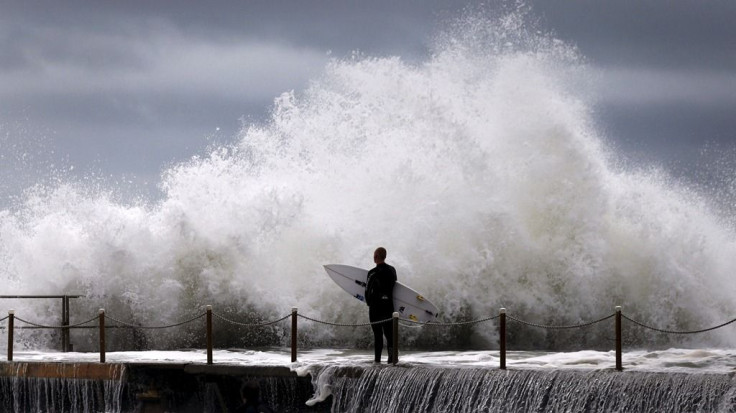Sydney Storm: Six Must-Know Facts

The hostile weather, developed after an upper level trough of cold air joined a relatively weak low-pressure trough on the east coast, continued to disrupt regular life in Sydney. Here are 10 most significant things you need to know about the "once in a decade" storm.
Heavy Rainfall
It has been the rainiest two-day spell in 18 years. From 9 a.m. on Monday to 7:30 a.m. on Wednesday, 222 mm rain has fallen on the Sydney CBD. A belt of storms is moving to the city on Wednesday. Up to 50mm of rainfall is expected as the heaviest falls will probably affect the eastern suburbs.
Strong Winds
Sydney has experienced its windiest spell for three days. There were gale-force winds reaching as high as 130km/h while winds with more than 90km/h speed damaged the localities.
Coastal Area
Sydney coasts had waves as high as 15 metres on Tuesday. Up to three-metre high waves crashed on the beaches.
Insurance
Insurance companies have made it a priority to undertake damage assessment due to the storm at the earliest. According to Insurance Council CEO Rob Whelan, large areas in New South Wales have suffered damage due to the storm. “Though most claims so far have been for low-level property damage mainly from water and wind damage to homes and damage to cars, insurers are also receiving claims for severe damage to houses and roofs,” he said, “Claims are also being received for storm water inundation.”
Transport
Trains have been replaced by buses in Oak Flats-Kiama and Hamilton-Wyong routes. A limited bus service is running in Hunter Line while most of the services between Dungog and Hamilton have been closes due to flooding. Over 250 traffic signals between Newcastle and Sydney went out of service on Wednesday morning. NSW Premier Mike Baird asked Sydney people to avoid travelling during peak times.
Damage
Three people were killed on Tuesday when flash flooding hit Dungog while 47 people were rescued from floodwaters. Around 25,000 houses in Sydney suffered power outage on Tuesday night. About 75,000 customers in Central Coast and 100,000 in Newcastle and the Hunter region also suffered black outs. The State Emergency Service said on Wednesday that it had attended 7900 call-outs since Monday.
Contact the writer: s.mukhopadhyay@ibtimes.com.au




















